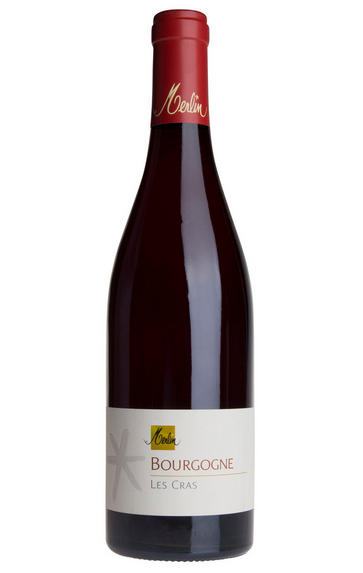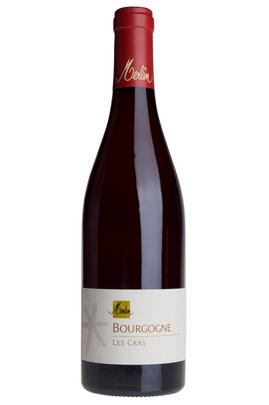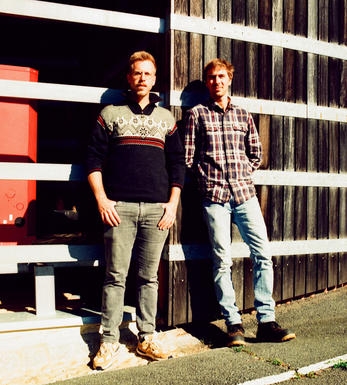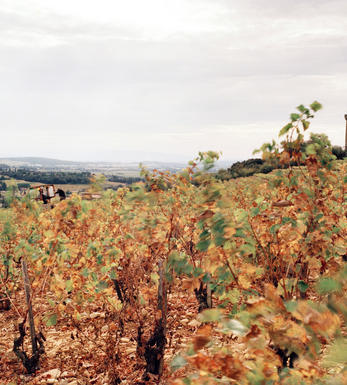
2019 Bourgogne Rouge, Les Cras, Olivier Merlin

Critics reviews
Jasper Morris MW, insideburgundy.com (Dec 2020)
About this WINE

Olivier Merlin
Olivier Merlin is widely regarded as being one of the very finest winemakers in the Mâconnais. He and his wife Corinne began in 1987 by renting 4.5 hectares. from René Gaillard, of Domaine du Vieux Saint-Sorlin, who wished to retire. Since then, Olivier has been buying the property in stages as well as adding new vineyards such as St Véran (in 1994 and ‘96). In September ‘97 Olivier took out a négociant's licence in order to be able to make some Pouilly Fuissé, since land in this appellation is neither available to buy nor to rent.
He makes three cuvées of Pouilly-Fuissé (one each from Fuissé, Vergisson and Chaintré) and a Viré-Clessé. From 2000 some Moulin-à-Vent joined the stable. The single-vineyard wines, including Mâcon-La Roche Vineuse, Les Cras and St Véran, Le Grand Bussière, get 18 months’ barrel-ageing with 30 to 50% new wood.
Olivier has established a reputation as one of the region’s most dynamic growers, a reference point for the Mâconnais. The whites demonstrate his exceptional winemaking talents, and the potential of “lowly” appellations. They are frequently taken for Côte d'Or wines if tasted blind. His Bourgogne Rouge is at its best after two to three years when the fruit expresses itself fully.
Olivier and Corinne have recently been joined at the domaine by their sons, Théo and Paul, who have completed their winemaking studies, and also spent time working at wineries in the Mornington Peninsula. With this extra manpower at the domaine’s disposal, Olivier has acquired a handful of new parcels including the Clos de France, in the heart of the village of Vergisson (2018 will be the inaugural vintage of the eponymous single-vineyard wine).
Discover the story behind our Own Selection Pouilly-Fuissé, made for us by Olivier. Read more

Bourgogne Blanc
Bourgogne Blanc is the appellation used to refer to generic white wines from Burgundy, a wide term which allows 384 separate villages to produce a white wine with the label ‘Bourgogne.’ As a result of this variety, Bourgogne Blanc is very hard to characterise with a single notable style, however the wines are usually dominated by the presence of Chardonnay, which is just about the only common factor between them. That being said, Chardonnay itself varies based on the environmental factors, so every bottle of Bourgogne Blanc will vary in some way from the next! Pinot Blanc and Pinot Gris are also permitted for use in Bourgogne Blanc under the regulations of the appellation.
As Bourgogne Blanc is very much an entry-level white wine for most regions in Burgundy, prices are usually very reasonable, and due to the terroir and climate of Burgundy, Bourgogne Blanc wines tend to have a strong acidity to them, combined with a vibrant and often fruity palate when compared with other whites from the New World, say, allowing fantastic matchmaking with many different kinds of food.

Pinot Noir
Pinot Noir is probably the most frustrating, and at times infuriating, wine grape in the world. However when it is successful, it can produce some of the most sublime wines known to man. This thin-skinned grape which grows in small, tight bunches performs well on well-drained, deepish limestone based subsoils as are found on Burgundy's Côte d'Or.
Pinot Noir is more susceptible than other varieties to over cropping - concentration and varietal character disappear rapidly if yields are excessive and yields as little as 25hl/ha are the norm for some climats of the Côte d`Or.
Because of the thinness of the skins, Pinot Noir wines are lighter in colour, body and tannins. However the best wines have grip, complexity and an intensity of fruit seldom found in wine from other grapes. Young Pinot Noir can smell almost sweet, redolent with freshly crushed raspberries, cherries and redcurrants. When mature, the best wines develop a sensuous, silky mouth feel with the fruit flavours deepening and gamey "sous-bois" nuances emerging.
The best examples are still found in Burgundy, although Pinot Noir`s key role in Champagne should not be forgotten. It is grown throughout the world with notable success in the Carneros and Russian River Valley districts of California, and the Martinborough and Central Otago regions of New Zealand.


Buying options
Add to wishlist
Description
This is from young vines from cuttings of old Pinot Fin – taken from the Clos des Epeneaux around 20 years ago – planted on a steep, south-facing limestone slope. With 50% whole bunches, there’s a gorgeous fragrant and floral nose, and a twist of herbal freshness on the palate. It’s stylish yet crunchy, with pretty red berry fruits. Drink 2022-2030.
wine at a glance
Delivery and quality guarantee